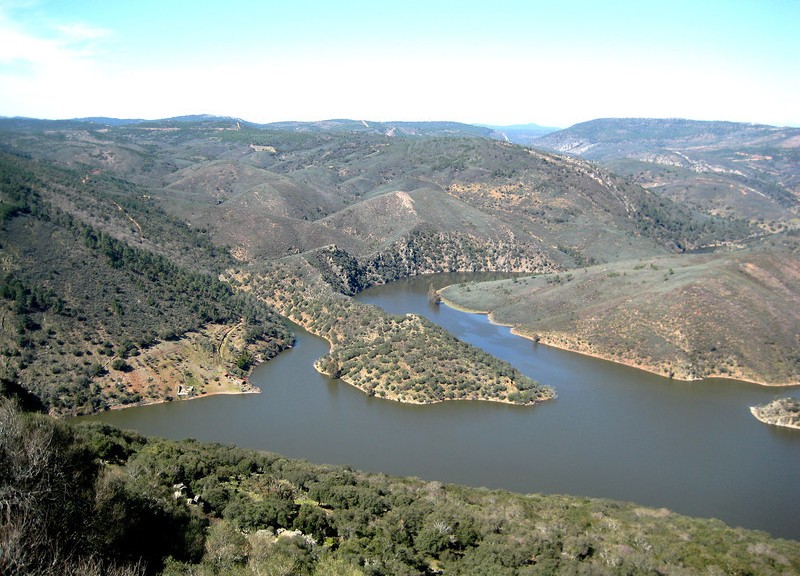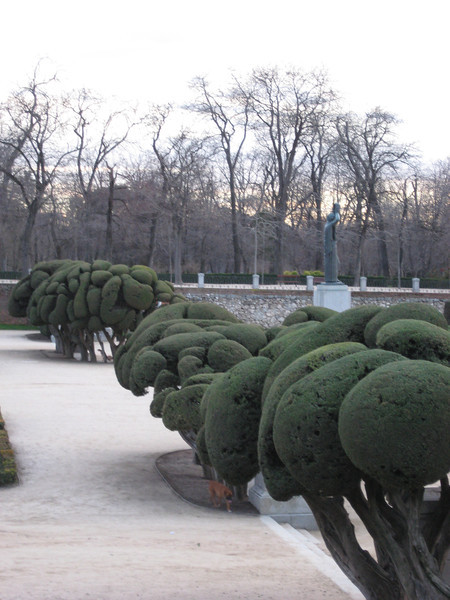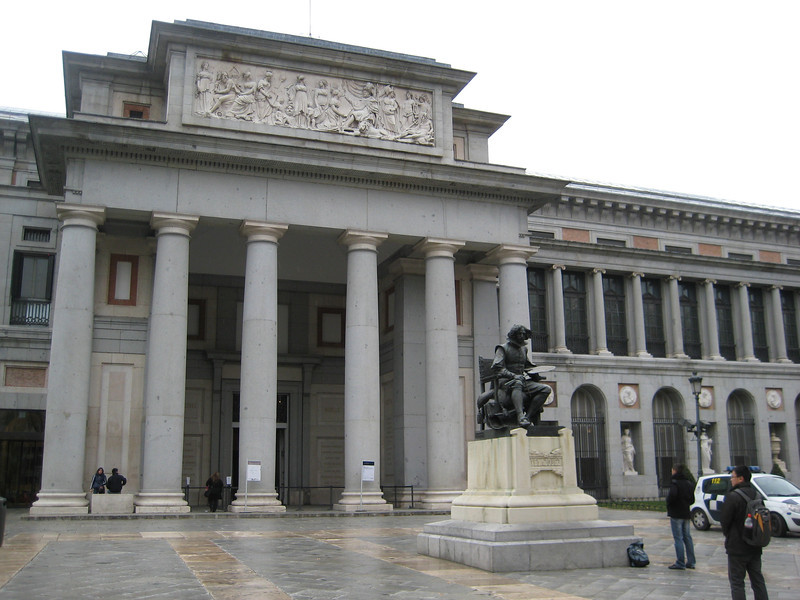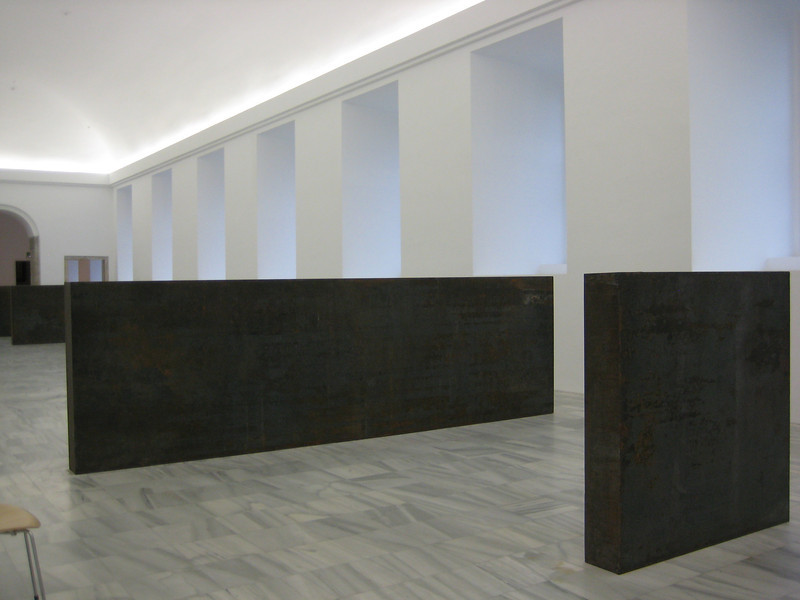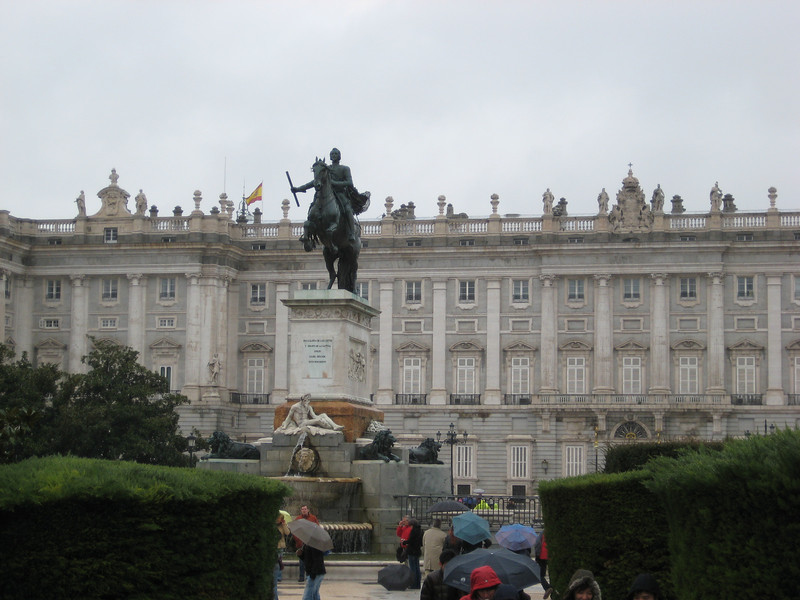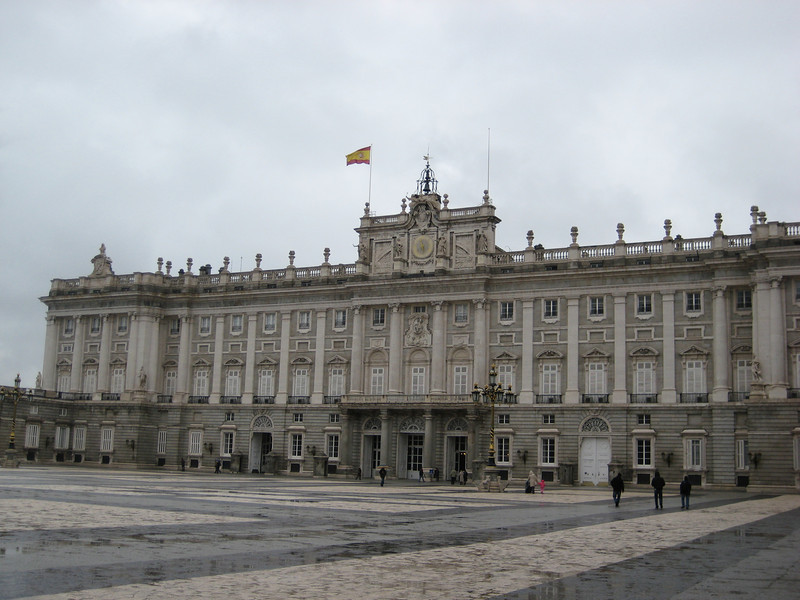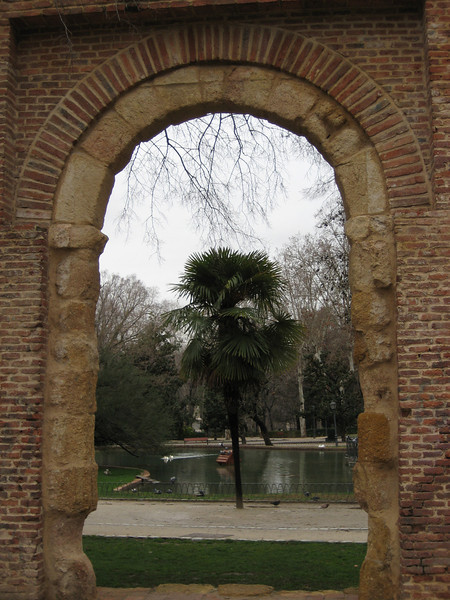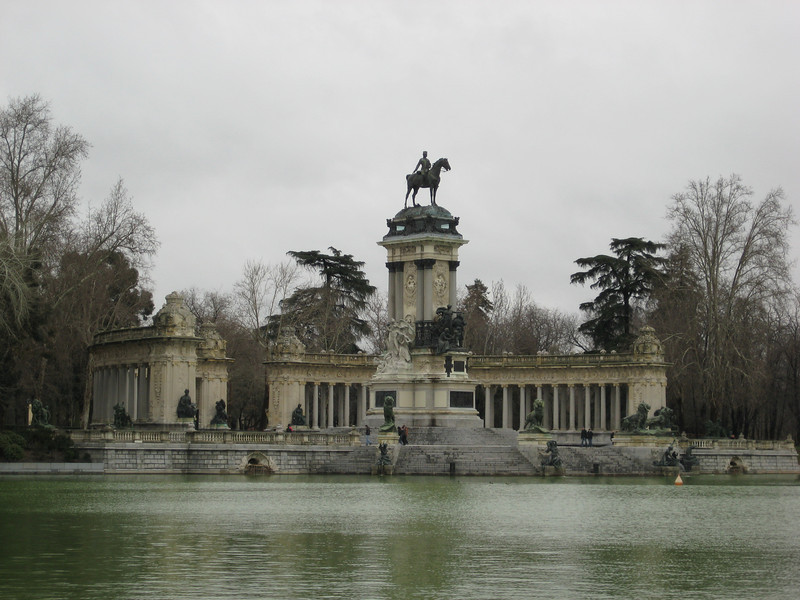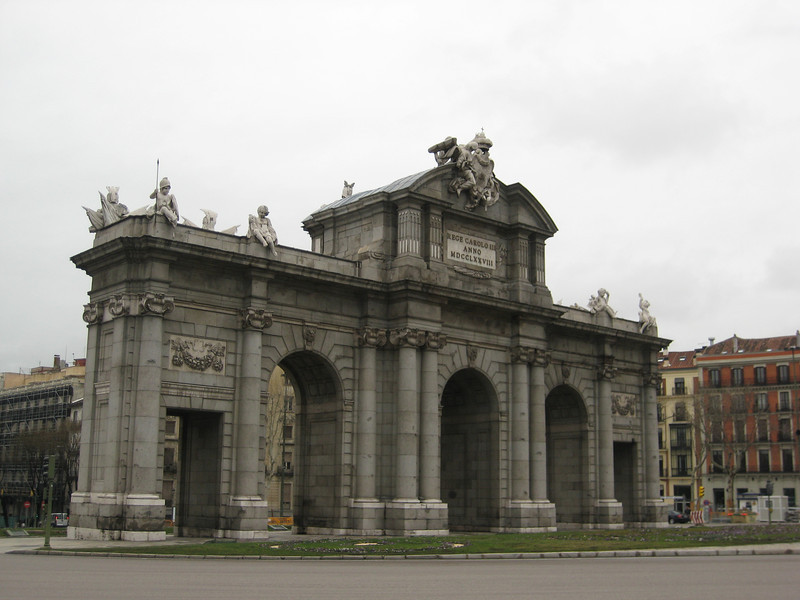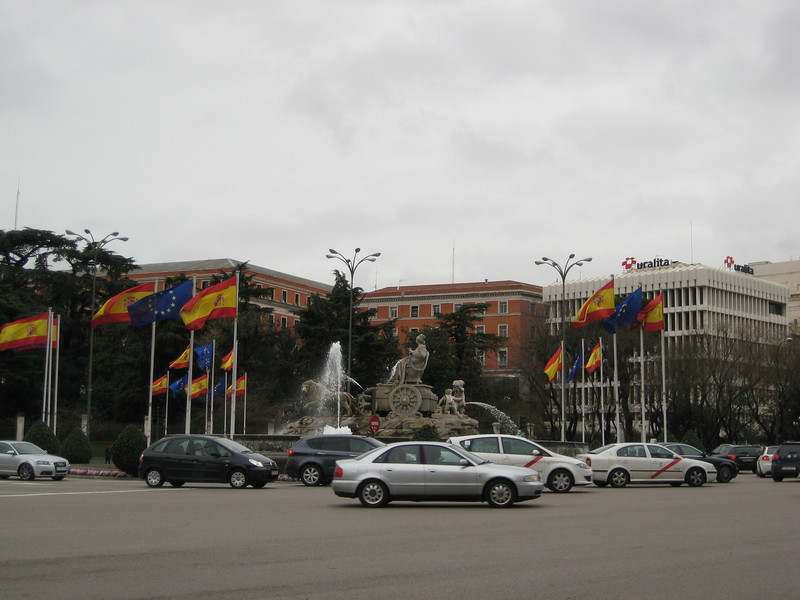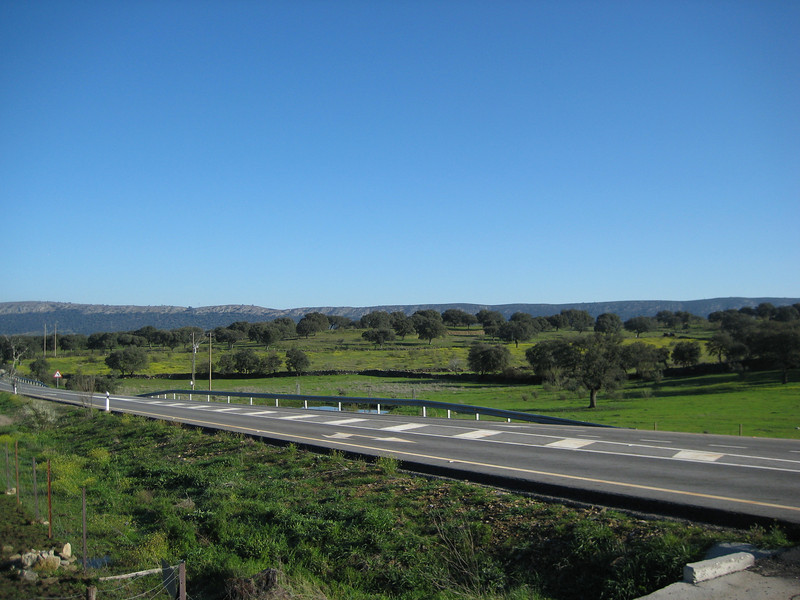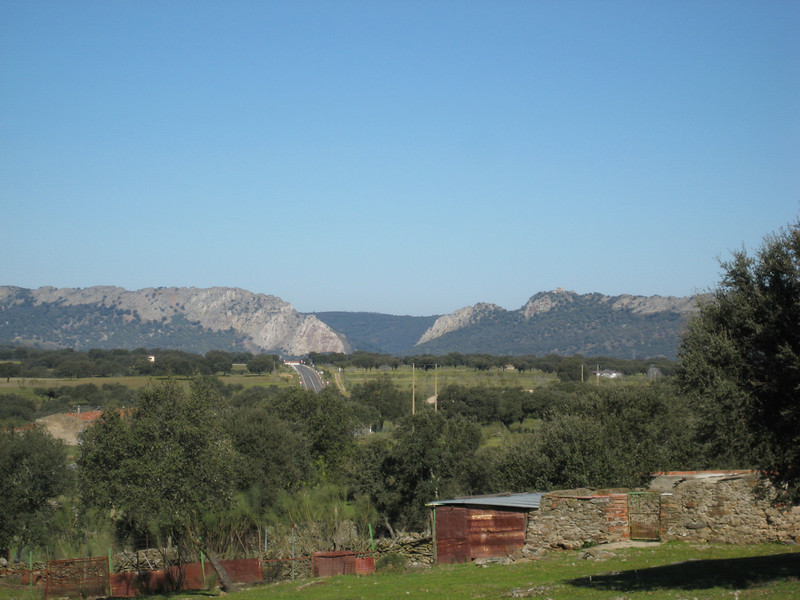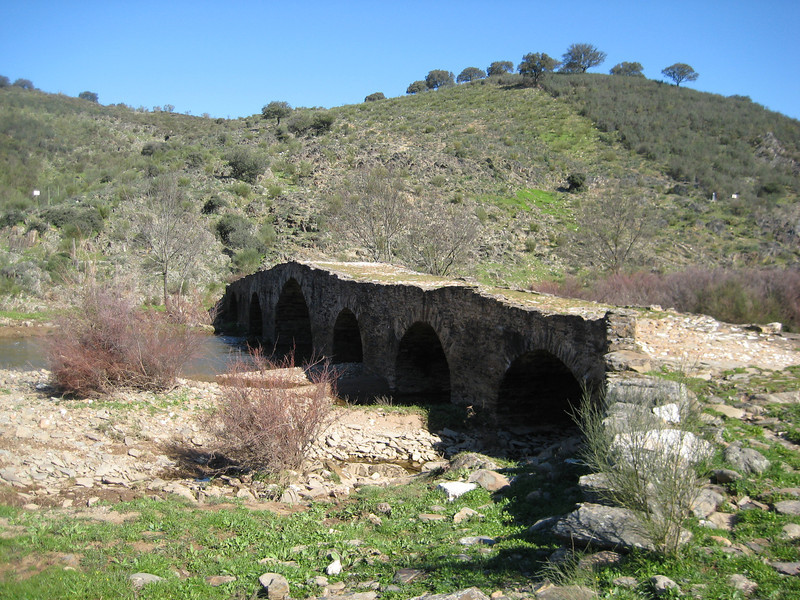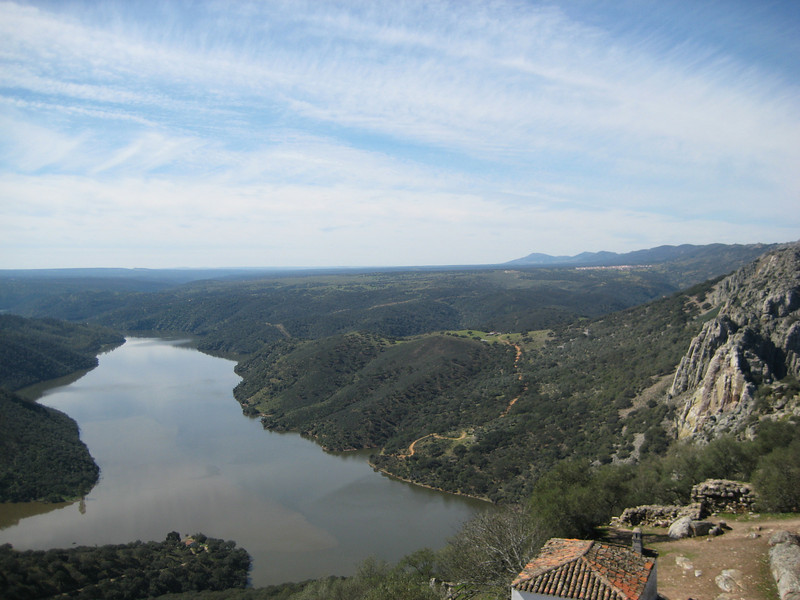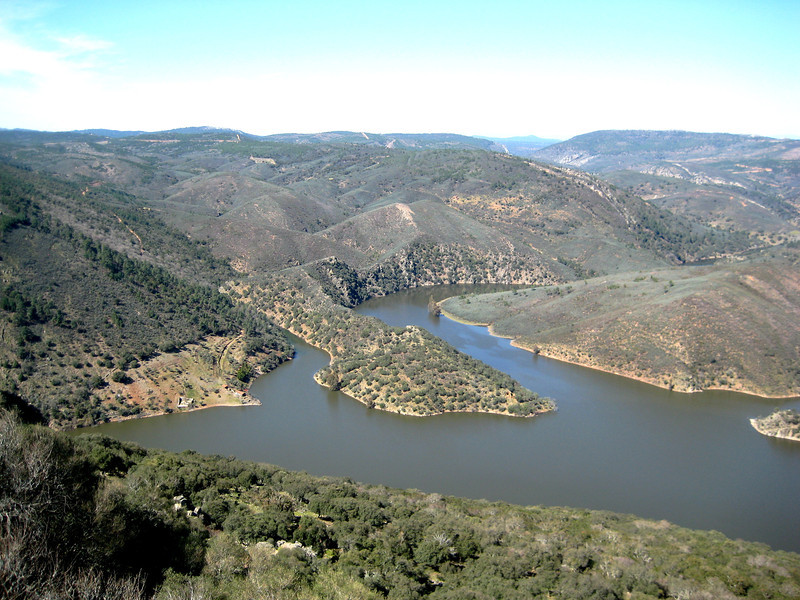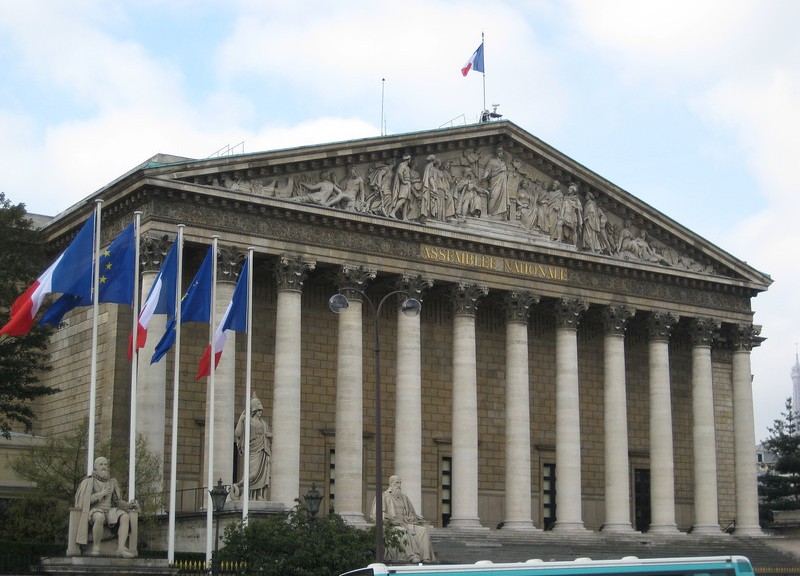So I’m back from seven days in Paris, all the washing is done, I’ve spoken to the family back home, my hair is cut (much needed) & I’m almost over a twenty-four hour cold – time to sit down & try & remember all the wonderful things I saw & did in over the last week. It’s a bit hard to tell, as they are quite different, but Paris may just have knocked New York City off the top of my favourite city list. NYC is a lot more intense & has a lot more energy, on the contrary Paris is generally pretty relaxed & the whole place is just beautiful & there is so much history & culture (chockas!).
Anywho, a nice simple & quick trip to Paris Gare du Nord on Eurostar – sort of odd to think that one is underneath the English Channel for twenty-odd minutes. The change from English to French countryside after the stretch of darkness was immediately noticeable. The hostel I stayed at for the week was easy to find about four Metro stops north-east of the train station & right on a canal. I was still unpacking my gear when I strangely familiar face walked in to the room – the Te Puke connection strikes again! Alastair was two years behind me through primary school at Fairhaven (in Adele’s year) & I went through school with his older sister – needless to say I was quite surprised to see him in the same hostel room as me in Paris. He had just arrived from NZ & was off to play centre for a French rugby club somewhere out of Paris. After that excitement & a quick meal, it was off to see that most famous of Paris icons – the Eiffel Tower. Quite beautiful lit up at night it was & good to get a view of the city from the top – I was surprised at just how flat the place is. For some reason, I thought that the tower was grey & steel coloured; I was intrigued to find it is painted bronze. Quite an achievement for the late nineteenth century – especially when it was only three years from conception to completion.
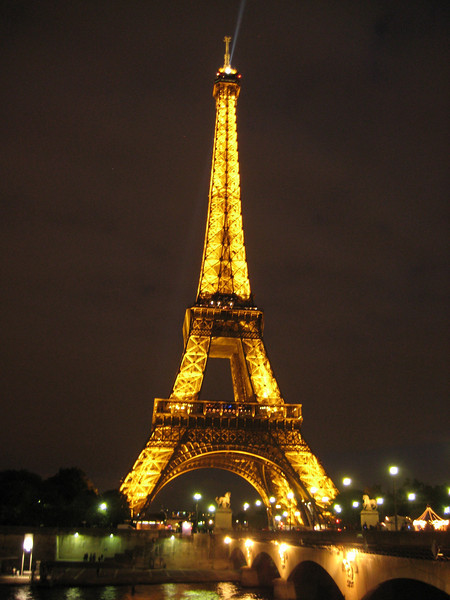
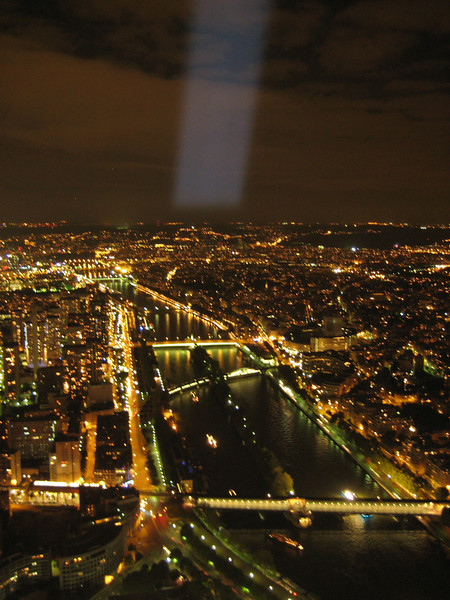
Friday morning it was off to Invalides to check out Musee de l’ Armee (the Army Museum). This started off by visiting Napoleon’s tomb inside the impressive Dome Church. It’s quite a massive tomb in the basement directly under an impressive dome.
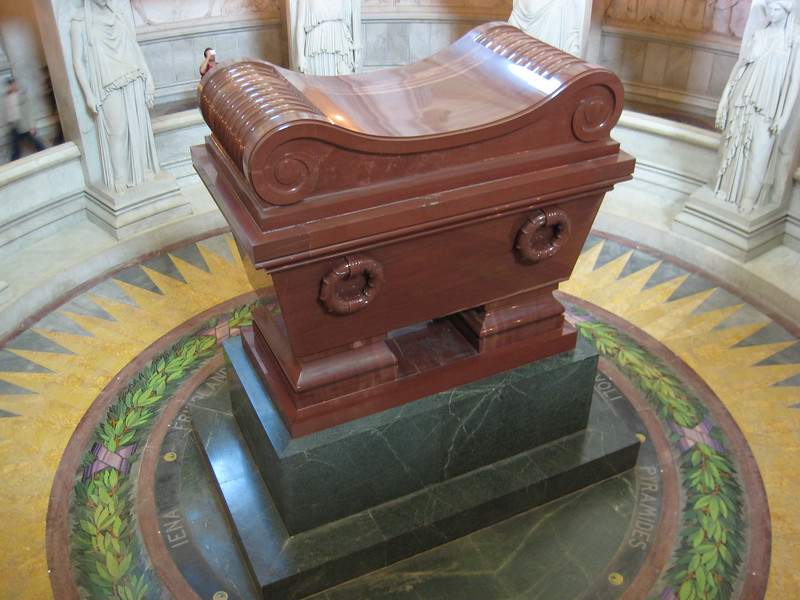
There were also the tombs of one of Napoleon’s brothers & some other notables. The bits of the musuem I could understand were quite interesting (thankfully the English translation was through most of the displays) – especially the display going from France’s defeat by Germany in 1871 through to the invasion of France at the end of World War II. It was nice to get a different take on the events of the first half of the twentieth century & also to learn a bit about of Free France Forces. My history got a good brush-up with the exhibit detailing of the military events around France’s first days as a republic until the monarchy came back after Napoleon’s exile. Being in Paris, the museum was housed in an impressive & large building – I’m not sure what was going on, but there was some event in the courtyard with a lot of parading military types & a military band playing. Upstairs in the attic of one wing of the building was an extensive collection of scale relief models of different towns & forts of France from 1668 to 1875 in the Musee des Plans-relief. It was a curious collection founded by Louis XIV to get an idea of what his troops were up to & where they were stationed – impressive in it vastness & detail.
After all that history I wanted to explore a little of the current city, so walked & Metro’d around a bit until I got to Montparnasse Tower – one of the few skyscrapers in Paris outside of La Defense business district (which is a fair way from the centre of the city & in Zone 3 of the Metro). The viewing platforms at 56 & 59 stories gave great views of the city on what was another typical (of the week) brilliantly sunny & warm autumn day. Unlike last night’s Eiffel Tower visit, I got a good appreciation of the city layout & just where such landmarks such as Notre Dame, the Pantheon, Arc de Triomphe, & the Louvre really were.
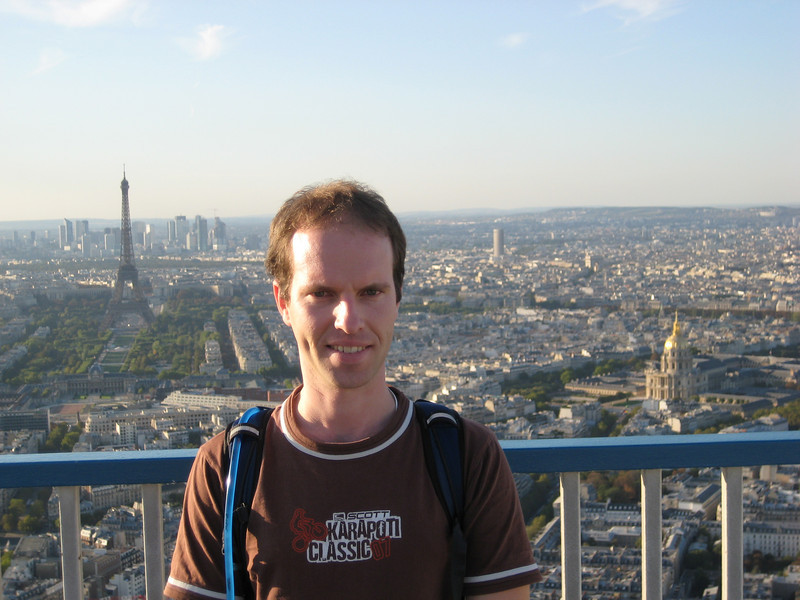
Somewhere in here I popped in to the Postal Museum, but that wasn’t too interesting as it was all in French & I had no idea what it was all about. Went down to the Louvre to check out the building & park close by, was there at sunset:
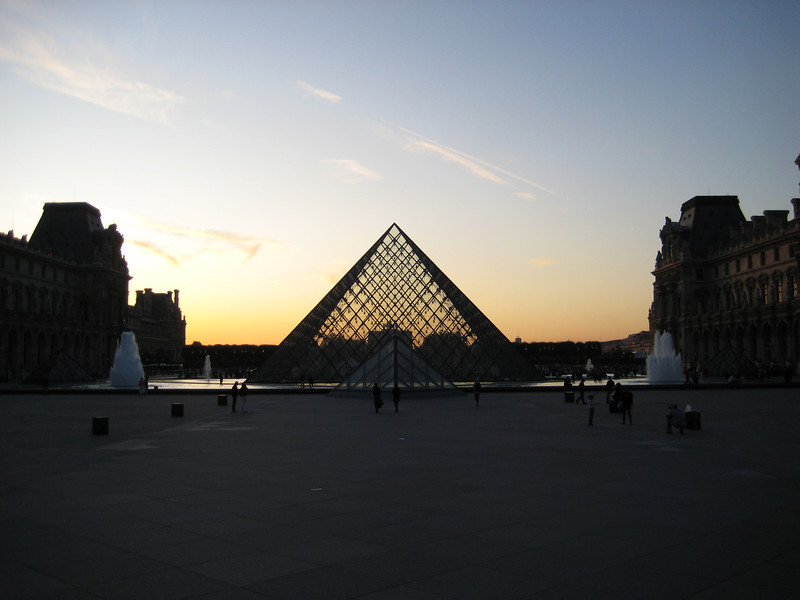
After a bit of an early morning stroll around the local area went to check out the Pantheon. Built by Louis XV in memory of Saint Genevieve in the later half of the eighteenth century it has spent alternate periods of its life as a house of Christian worship & secular use. It has been in secular use since the funeral of Victor Hugo in 1885 & holds the tombs of some of France’s most famous – Hugo, Dumas, Voltaire, Braille, the Curies (Marie being the first women entombed here). It’s another grand building & interestingly from its dome hangs Foucault’s pendulum. The pendulum was first installed in 1851 to prove the earth’s rotation.
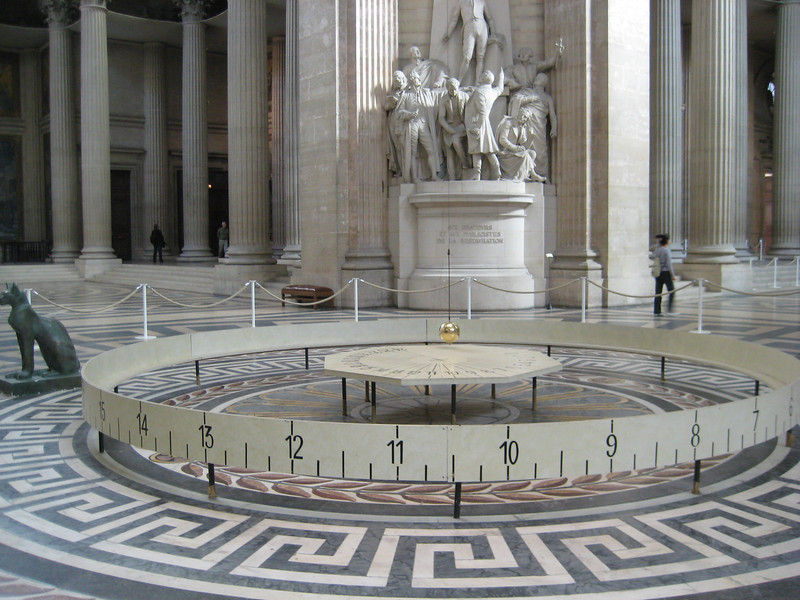
A deceptively long walk down a slight hill & over half of the Seine & I was at Notre Dame – had a brief visit underneath the square in front of the cathedral to the crypt. It shows rooms & foundations of the city from the Medieval & Classical Ages. Due to the huge lines waiting to go in to & up the cathedral, I skipped Notre Dame & went to the other end of the small island to check out the Conciergerie & Sainte-Chapelle.
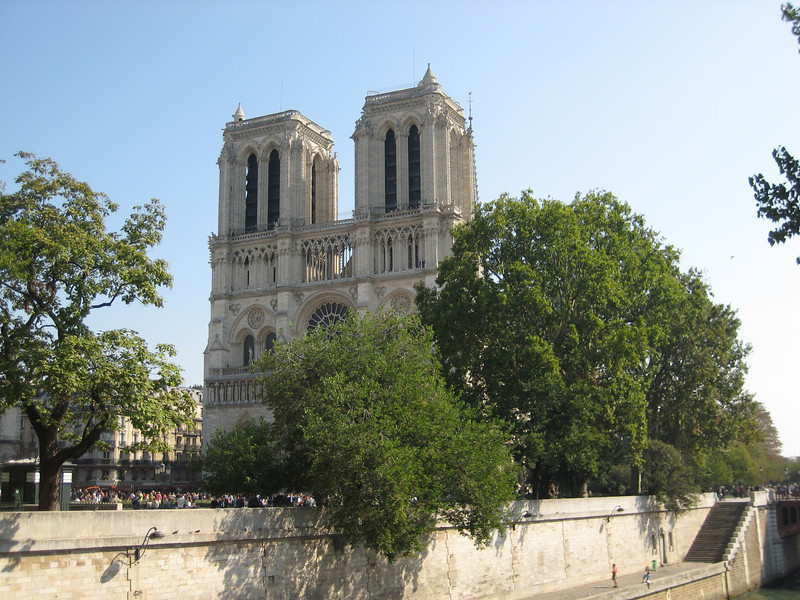
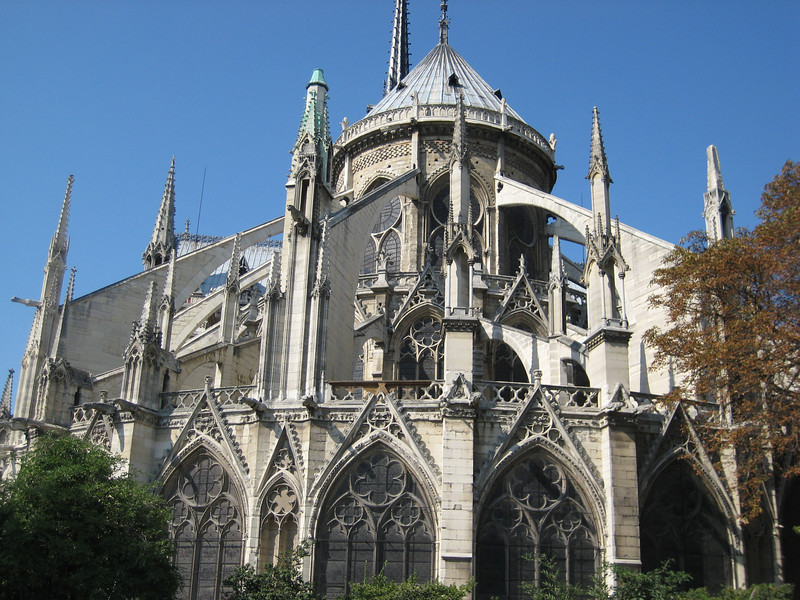
The Conciergerie started out as a palace many centuries ago, became a palace & a prison and when the royal family left it became more of a prison than a palace until it was eventually just a prison. It was used by the Revolutionary Tribunal & many dissidents were held & guillotined there – some of the more famous ‘residents’ include Marie-Antoinette & Robespierre.

Almost next door is Sainte-Chapelle built in the 1240s for the eventual Saint Louis to house the relics of the Passion. It’s a very grand Gothic chapel & I was intrigued by its relatively small footprint, in relation to its very tall walls. The walls, especially on the top of the two stories are filled with massive stained-glass windows – some of which have been recently restored.
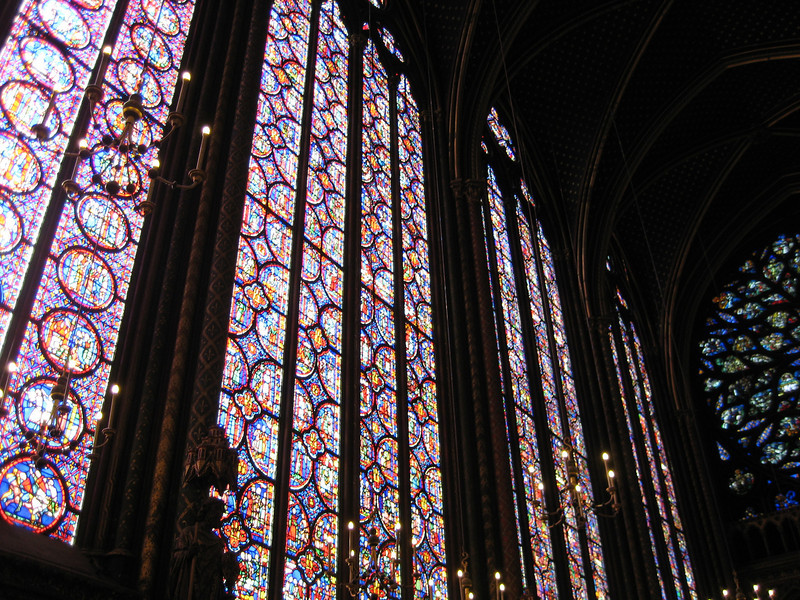
Leaving the centre of the city I was off to the Musee des Arts et Metiers, which is a large museum of innovations & invention. I spent quite a bit of time in the exhibits at the start of the museum that concerned measuring the world & the industrialisation of process. Particularly neat were Lavosier’s laboratory (he worked out the chemical composition of water & is considered by many to be the father of modern chemistry) & the ironmaking, steelmaking & rolling mill models & very good history of the these processes. The blast furnace model was very good & it was good to learn that tuyere is a French word – it always seemed an unusual word to me, but it makes a bit more sense now that I think about it.
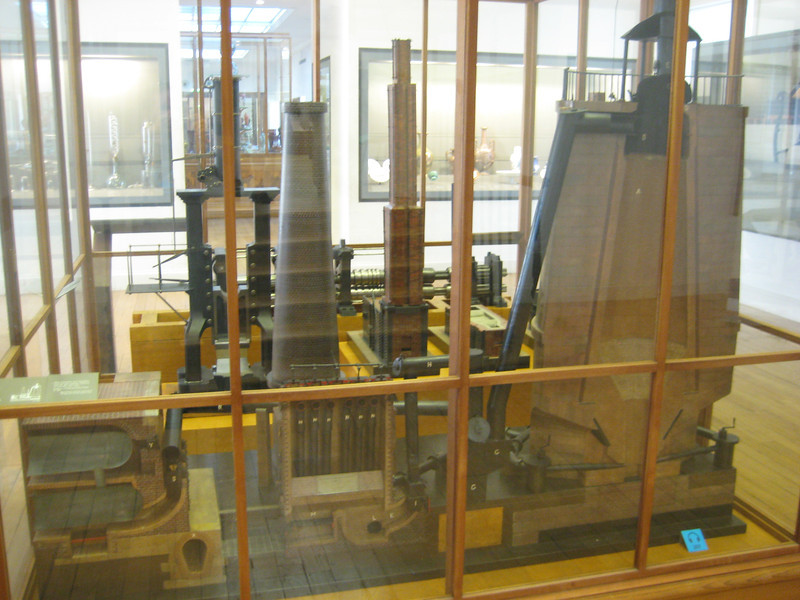
A quick whizz around the rest of the museum as it was close to closing time – more good exhibits & models of construction techniques through the ages, communication, energy, mechanics (I think my grandfather would have particularly enjoyed all the gears & machines in here) & transport. They even had the original ball from Focault’s Pendulum (the one swinging in the Pantheon is a replica). The Musee national d’art Modern’e was open late, so I took a look around. It is housed in a suitably modern building, & although it had some good pieces in it – I once again showed my general disinterest & lack of appreciation of modern ‘art’. Wonderful onion soup for dinner (big hunk of cheesy bread floating on the top) & a nicely tender & tasty stew as well.
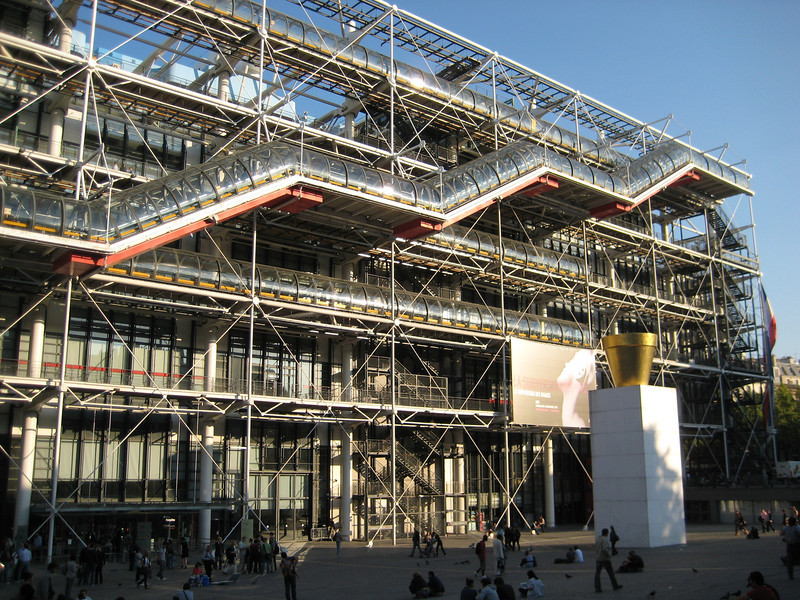
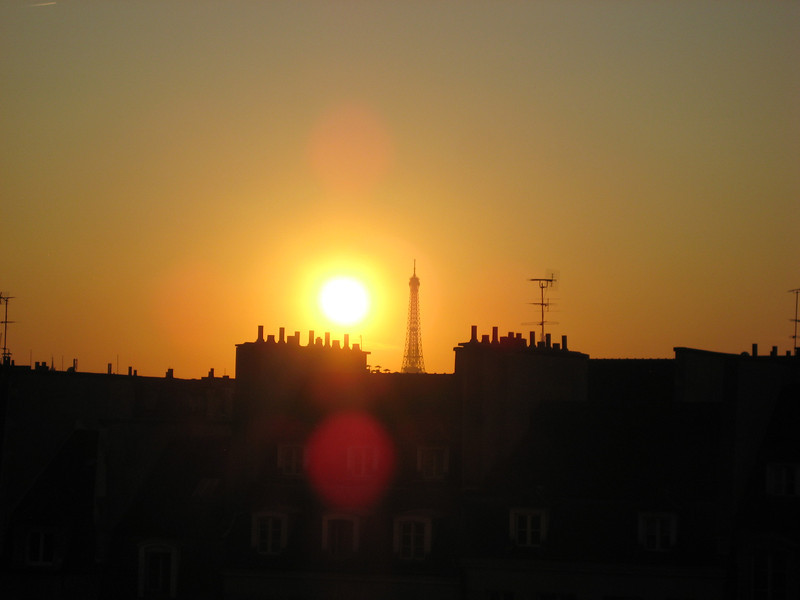
I managed to get to Notre Dame before opening on Sunday morning & be in the second group up to the towers. It’s a bit of a dizzying climb up spiral staircases to sixty-nine metres – but the view is worth it. The towers and carving are pretty neat as well – as is the mammoth “Emmanuel” bell which has a mass of over 13000 kilograms! The panorama of Paris was spectacular – is funny how you don’t have to get very high in Paris to get a great view of all the old buildings & the monuments. Down from the towers, I popped in to the cathedral with hordes of tourist while Sunday morning mass was taking place – the congregation seated in the centre of the cathedral & the tourists wandering around the periphery. The air was heavy with overpowering frankincense – this is only really of interest to me & Trish as we recently finished watching the BBC series on the frankincense trail.
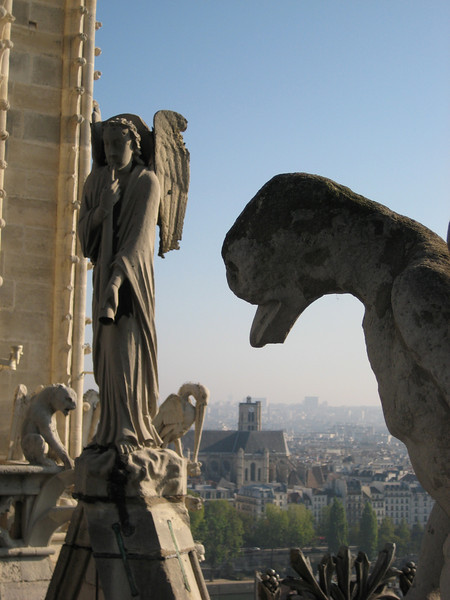
From here I made my way to the Musee d’Orsay – housed in a big old, but renovated, railway station; the station had been built for the 1900 Exhibition so is a work of art itself.
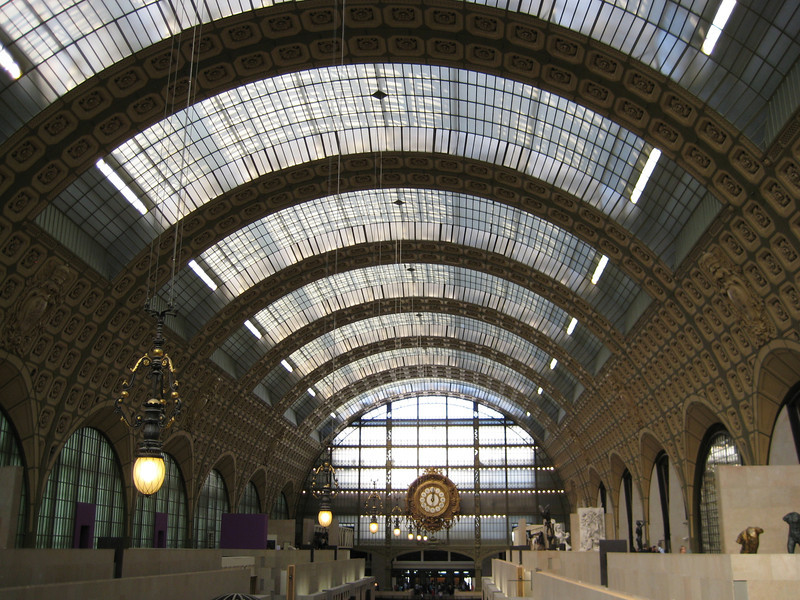
This gallery quickly became my favourite so far & still remains one of the best that I visited during my stay. It displays work from mid nineteenth century to the eve of the Great War & holds a lot of Impressionist, pre- & post-Impressionist, Naturalist and Academism works – not that I can really pretend to know much of the difference. Monet’s works were, as expected very good; I also enjoyed works by Signac & Detaille, and saw Whistler’s famous old woman sitting on a chair. This polar bear is for Uncle Geoff:
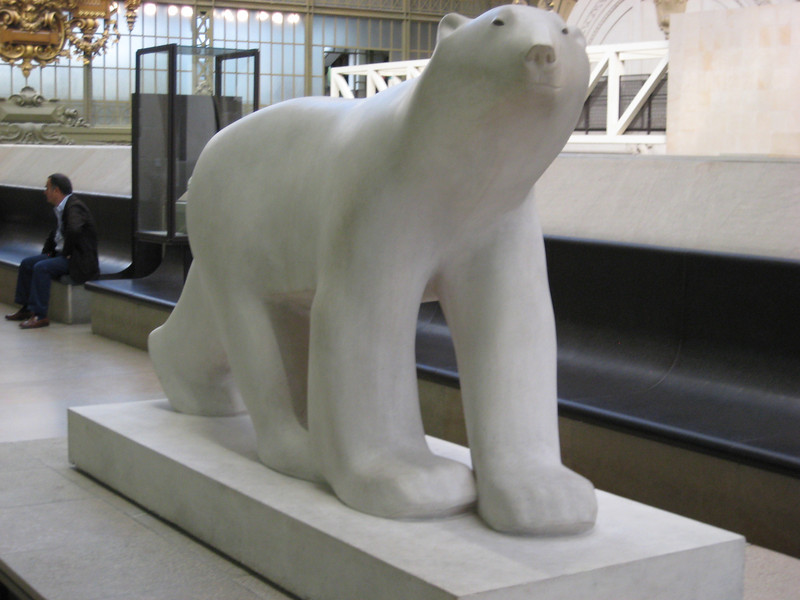
In a departure from all the galleries & fabulous buildings, my next port of call was Musee des Egouts de Paris – a museum of the Paris sewer system. It was of course the engineer in me prompting me to visit these dark & slightly whiffy tunnels under the city – only a slight unpleasant odour, much better than those unforgettable field-trips. Paris seems quite proud of their sewer system & I begun to see why. The 2100 km of tunnels not only transport wastewater (storm water & sewage seems to be mixed), but the tunnels are so large & go to so much of the city they also carry the potable & non-potable water supplies, phone cables, fibre optics & compressed air; the only don’t carry electricity & gas because of the fire risk. Geek that I am, I was of course fascinated by the small glimpse at this large network that has been around for over a century. There were all sorts of ingenious mechanical means that they had invented for clearing the bottom of the channels of silt & sand – this is a giant iron ball (slightly smaller than the cross section of the tunnel) that moves slowly down the sewer, of course backing up the flow behind it & the extra pressure displaces the sediment.

It was a pleasant walk along the Seine to the Maritime Museum past the Eiffel Tower again – these were the best looking bikes I saw all week. Admittedly, not all that practical; but compared to all the commuter bikes that are around – these were the closest to mountain-bikes I had seen for some time.
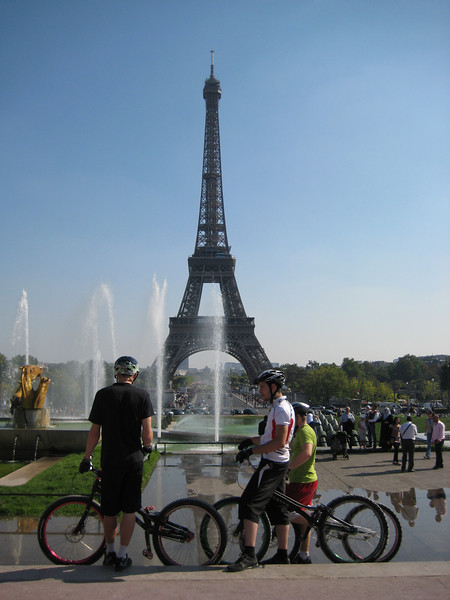
The Maritime Museum was not all that great – probably because it was mostly in French, unlike a lot of other museums which are tri-lingual at least, & also it had to compete with the British Maritime Museum which is excellent & I had been to only a week prior. There was this Imperial barge:
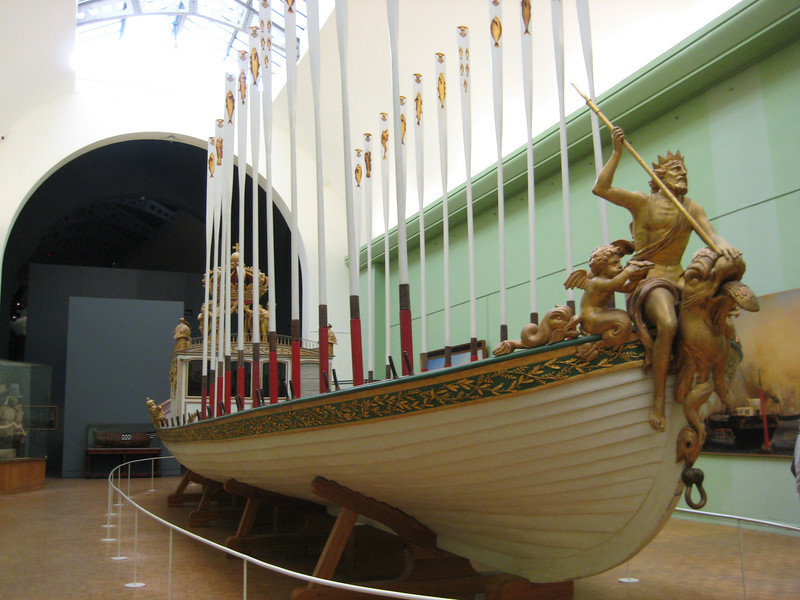
Off on the Metro to La Defense, I took the #1 Line to the end – these must be the newest trains on the Metro – they were noticeably faster, you didn’t have to release the doors manually (after the driver had unlocked them – you can’t just open the door on a moving carriage) & you could see right down the train from one end to the other – it’s really just one big carriage. While on the subject of the Metro – it was great. The trains were regular, quick, comfortable, there were no delays, the map & signage was easily understood (even though it was in French), you didn’t have to scan your ticket/card to get out & there were stations everywhere – Parisians are rightfully proud of it.
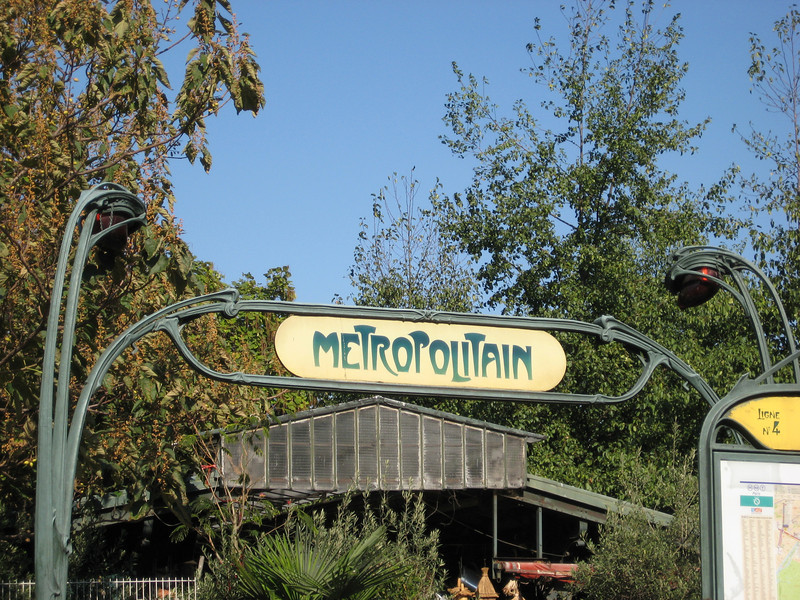
At La Defense I went up the Grande Arche, which is twenty years old & sits at the end of the “Historic Axis of Paris” – a straight line from the Louvre, through the Pyramide de Pei, the Arc du Carrousel, the Jardin des Tuileries, the Place de la Concorde, Champs Elysees, & the Arc de Triomphe up to Grande Arche. Really it is a hollow 110m cube, with the two side full of offices & the top floor a viewing deck & exhibition space. Yet another different, but good, view was to be had of Paris and pleasingly & surprisingly there was a computer museum at the top. It had some wonderful artefacts (it’s funny calling things only ten to twenty years old such, but that’s the speed of development) – right from punch card makers & readers, through one of those wonderful computers from the ’60s that fill an entire room, the vast range of PCs that started to proliferate through the ’80s & things that even I recognise from school in the ’90s (still didn’t see Carmen San Diego though). In a side room, there was also an exhibition of Macs from the last three decades – fascinating. I may be a nerd, but am not all that much of computer-geek – but it was still a very different museum to most I have seen & was excellent.
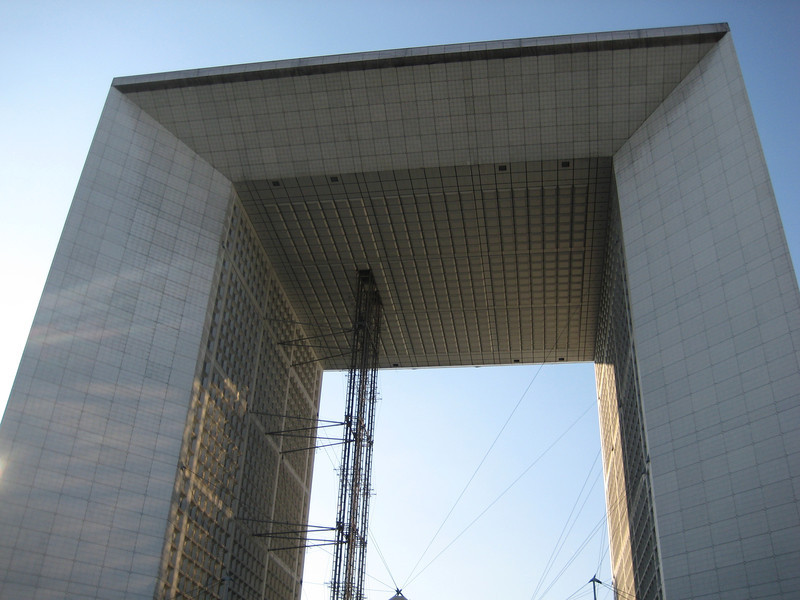
With it being so obvious from the top of the Grande Arche, the Arc de Triomphe was the next obvious place to visit. It may not have been as tall as some of the other towers, but it was all stairs to the top & the spiral sure went for a long way without interruption.

I managed to arrive at the right time to see the lighting of the flame for the Unknown Soldier of World War I – the small exhibit upstairs (I wasn’t expecting there to be so much room inside the structure) proved a little bit of a distraction before heading up the last few stairs to the roof & once again there was another vista of Paris before my eyes. Looking straight down the Champs Elysees,
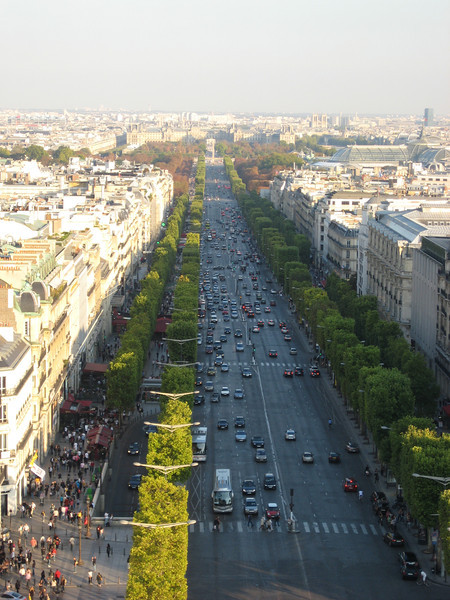
It was easy to work out where I was going to wander next – all the way down to the Concorde (a gift from Egypt once upon a time).
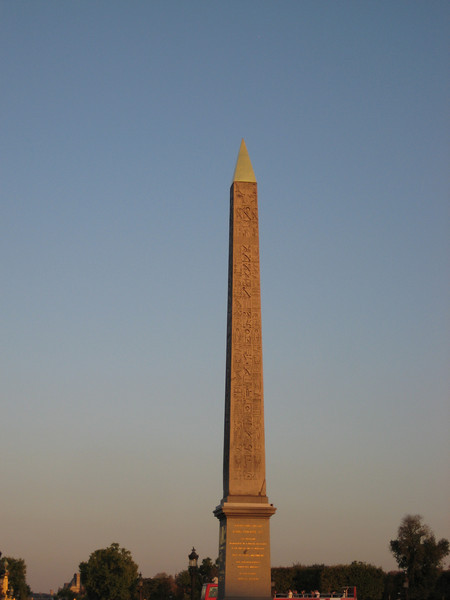
Just as well it was all gradually downhill – it was a long way; I was surprised that most of the Champs Elysees was so built up, I was expecting it to be more open. Eventually it opened up to a small park near the bottom.
On Monday, I was keen to get away from the centre of the city, so went out to the end of 13 line (north of the city) to visit the Basilica Cathedral of Saint Denis (“there’s some lovely filth down here”), who was apparently martyred on this site around 250 AD. Parts of the current cathedral have been around since the fifth century & most of the kings & queens of France have been buried there since the sixth century. There are plenty of recumbent statues & all sorts of crypts – the remains of Louis XVI & Marie-Antoinette are here, moved there by Louis XVIII – the last king to be buried there in 1824.
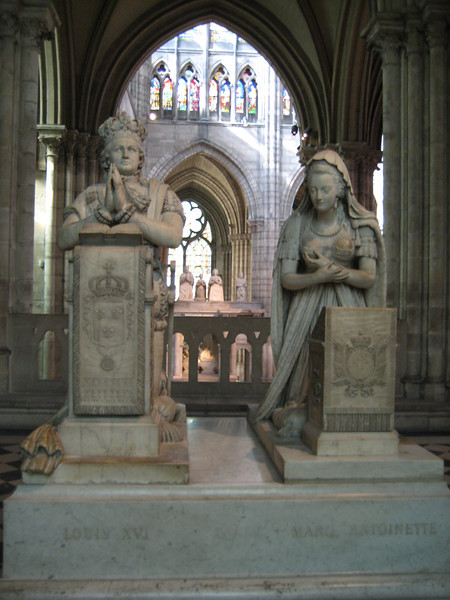
Changing Metro lines a bit, I found myself climbing what must be the only hill in Paris. At the top was quite a touristy with a lot of outdoor cafes crowded around a small square & it was one of the only places I saw artists trying to convince people to sit for portraits & caricatures. I was up there to go the Salvador Dali Museum; it was quite small & I was surprised at how much I liked it. There were a lot of interesting paintings, sketches & sculptures, especially the melted clocks.
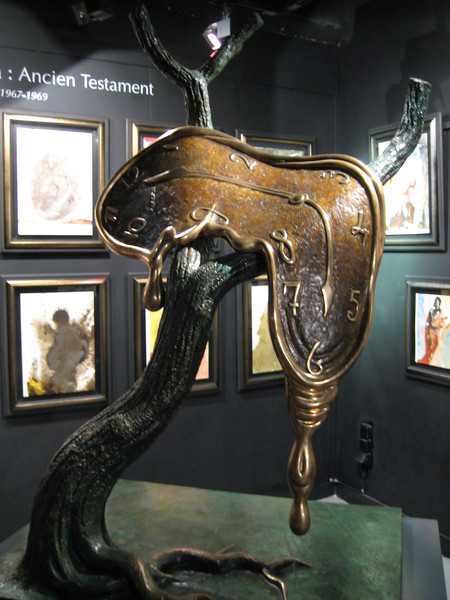
There is of course a big church (Sacre Coeur) on the top of the hill & on the steps in front there were plenty of street performers & spectators – & even a bride & groom (not an uncommon sight in various public places around the city).
From the bottom of this great park (with its own spectacular view of Paris) it was a bit of a walk back to the Metro & I walked to one more stop to see the Moulin Rouge – passing through a rather seedy looking stretch of road on the way. Took the obligatory photo & went back to the Concorde for, surprise, another museum. This one, the Musee de l’Orangerie is quite a lot smaller that some of the more famous museums & was chosen & arranged by Monet. The top floor is dedicated to two large rooms displaying Monet’s spectacular “Water-lillies”. Downstairs in the basement there are many more pieces; my particular favourites were Renoir & Derain.
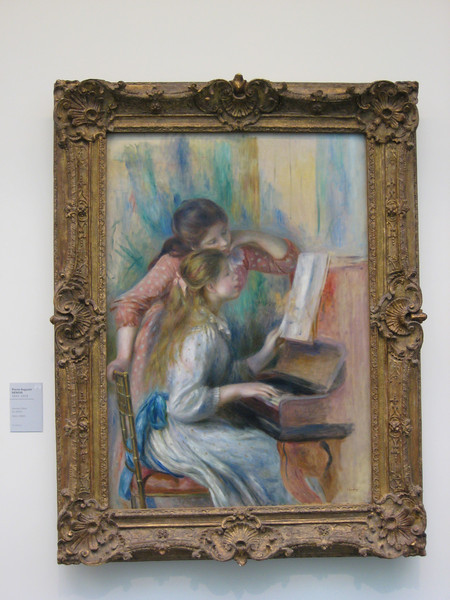
More Metro-riding & I was at the Musee du Cinema – quite a small museum, but with a good audio-commentary explaining the development of the technology & art of cinema; the most notable thing on display (to me) was Norman Bates’ mother’s head, which was a gift from Hitchcock to the museum. By now I was quite weary & headed back home for another good meal & rest.
By now I was getting a bit exhausted from all the walking & excitement, so Tuesday started off with just a ride to a Metro stop one station away to one of the best science museums in the world – Cite des Science & de L’industrie. It is housed in a large, new building near the same canal that runs adjacent to the hostel, with a rather strange looking reflective sphere sitting in a vast lawn next a beached submarine.
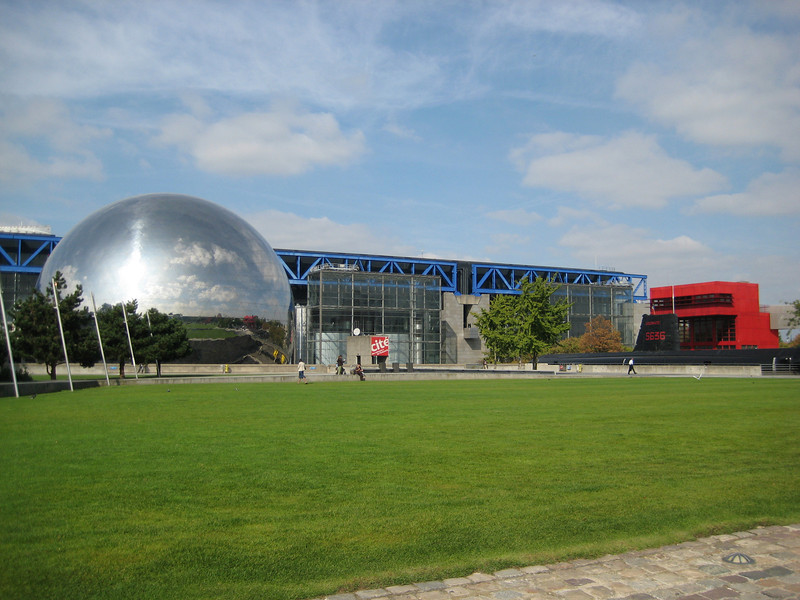
The museum started off well with a very good exhibit about innovation & taking ideas to market, & there was also a very informative section on epidemics – which I strongly suspect was put together before swine flu raised its head & snorted rather loudly. But apart from that, the rest of the place was quite disappointing, partly due to the exhibits being rather old & tired & the English translation rather poor (for the record, the best translation at a museum was at Musee des Arts et Metiers – it was clear & without strange turns of phrase that took time to decipher). I was however pleased to have a poke around a submarine from the ’50s. It was, by today’s standards quite small, diesel powered, carried a crew of forty & an arsenal of eight torpedoes. A pleasant stroll in the sun along the canal for a short break at the hostel before heading off to the Picasso museum – which, it turned out, is closed for a couple of years for refurbishment. I did stumble across the Musee Carnavalet – I never worked out exactly what the theme of the museum was as there was little translation, but it did have a big section on the Revolution & was a maze of a place & over all quite large considering it was on what I thought was quite a small block. It was quite close to the Bastille, which I was quite keen to see, but there doesn’t seem to be much left of the famous prison. Due to my weary feet I spent an hour sitting down on a boat on a cruise up the Seine from the Eiffel Tower.
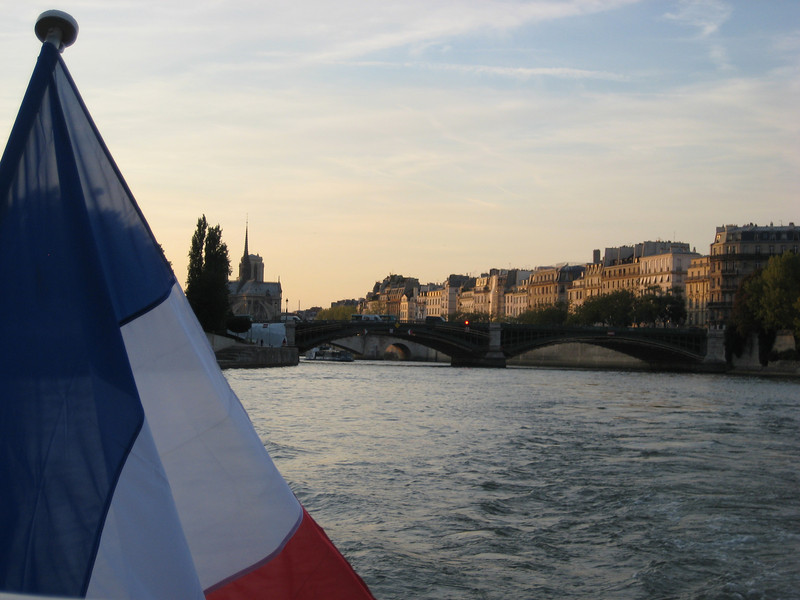
My last full day in Paris, Wednesday, I had planned a tour of the Opera House, some wine-tasting & then on to the Louvre. But in the end I couldn’t bring myself to leave Paris without visiting the famous palace at Versailles. So I was out with many others walking from the train station up towards the palace shortly before eleven. It was great to finally visit such a place with such an interesting history (Fifth-form History was of course where I first heard of Versailles – curiously, I did not see a single mention of the treaty that set such a disturbing & tragic ball rolling). The whole place was just exquisite & as happens in the occasional place, I walked around conscious that my mouth was half-open in amazement. No matter how many photos I put up here, I still don’t think I’d be able to convey the grandeur of the place; so I’ll stick to one of the chapel & one of the Hall of Mirrors.
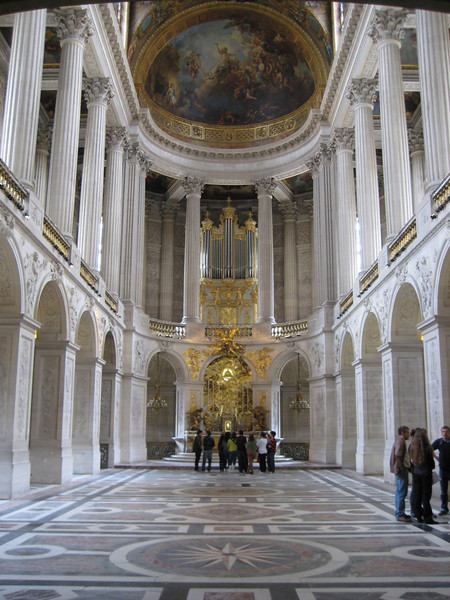
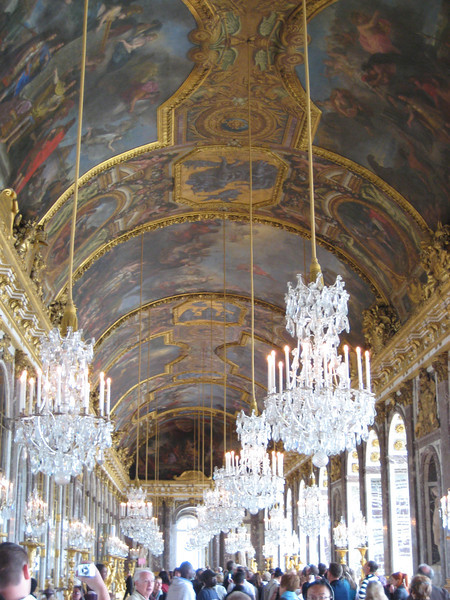
Overall, there were huge paintings, sumptuous decorations & furnishings, marble columns; in some ways it was easy to get an inkling of perhaps why the monarchy was overthrown – just so opulent & completely over the top, quite incredible. After all the exhibits indoors to go around, it was time for a stroll around the gardens. If the palace was big, the gardens are just massive; actually, looking back at the palace from the gardens, the palace didn’t look as big & as impressive as I always thought it was from various photos – perhaps I was just not in the right place to get the best perspective. The beauty of the large gardens was that it was very easy to escape the crowds & find a little peace & quiet.
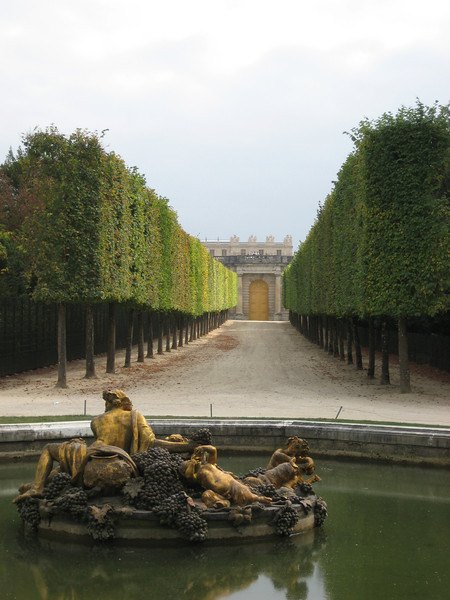
Still, there was a lot of walking to be done to get down to the comparatively small, but still very big, houses – Grand Trianon & Petit Tianon. The Grand Trianon was built for Louis XIV to be able to escape to the far end of the park at Versailles; it also had a wonderfully fragrant garden. It was all slightly uphill to get back the town to grab a late lunch & the train back to the Louvre.
Thankfully, Wednesday is one of the late nights at the Louvre so I had plenty of time to get around most of it. Once again, I was aware of walking around with my mouth open at times. It was hard to know whether to be more impressed by the building or the collections; with both being vast (to say the least), the shear size of the collection was staggering & is what the Louvre is most famous for, despite being a very large former palace. (As for the pyramid, it has great function – but looks out of place in the courtyard & I didn’t really like it.) The sculptures
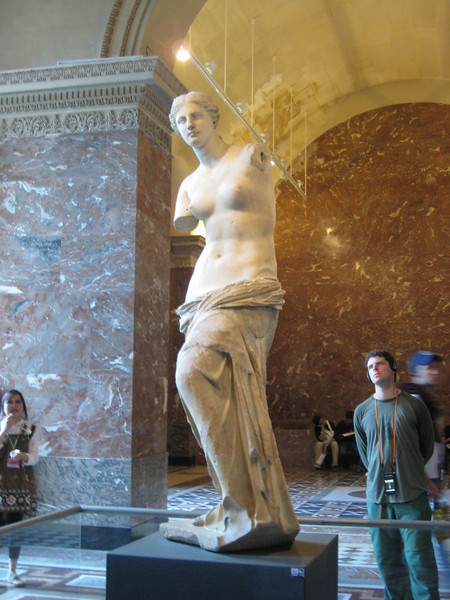
& vast collections of Etruscan, Mesopotamian, Iranian, Egyptian & Greek artefacts was incredible (how does one collect so many items?).
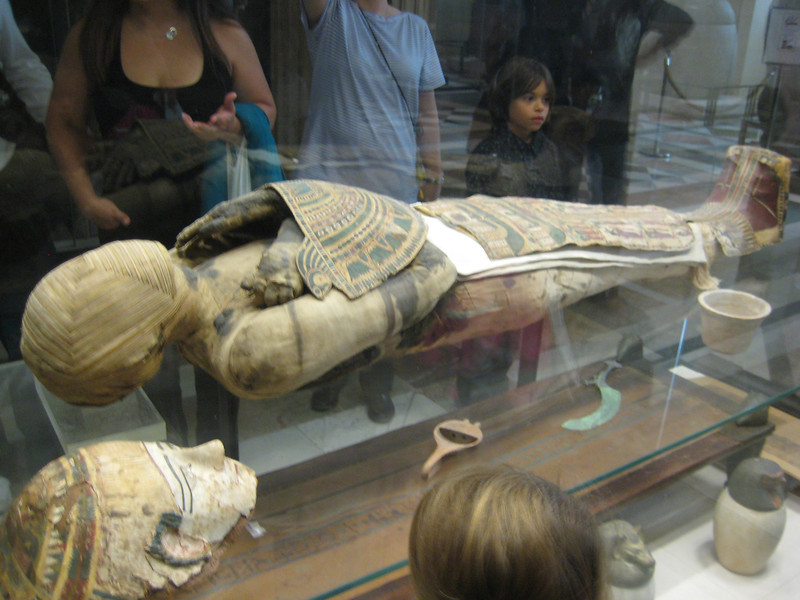
And then there were the paintings; I’m a bit lost for words about them. After hearing occasionally that the Mona Lisa is a lot smaller than one expects, I was surprised to find she was a lot larger than I thought she would be. It was also pretty easy to get close to her (although I was surprised at how many Indians came up to me elsewhere in the museum asking for directions to the most famous of paintings); actually, there were masses of people around, but the place is so big it wasn’t a problem anywhere – I’m just glad I came to Paris at the end of September & not the height of the summer holidays.
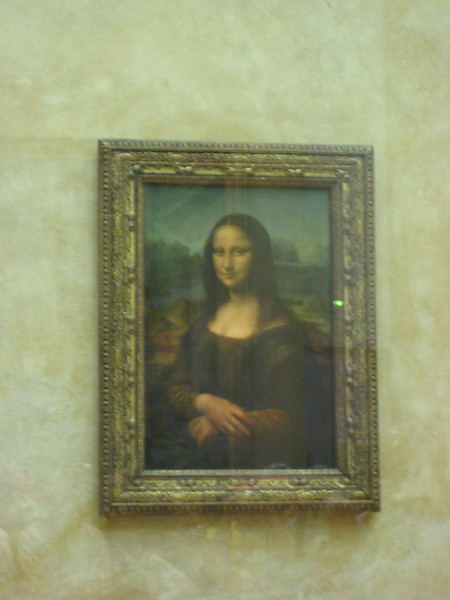
After two incredible palaces in one day, my feet were aching a bit too much so I was happy to hop on the Metro again & head back out to the hostel & then out to grab a bite to eat (first time I remember being the only diner in a restaurant – it’s a little odd; I’m used to not having conversation when I’m dining, but to have no conversation around the whole restaurant is a little strange).
I was hoping for a nice sleep in on my last day as check-out was at ten & my train didn’t leave until mid-afternoon; but that was not to be – however, it was nice to have a chat to someone with a Kiwi accent over dinner & share travel stories. With a few hours to kill, I left my luggage at the hostel & headed in to town to check out a couple of buildings I had seen from a distance. Here is the Assemble Nationale, outside which a young woman tried to pull the “I just found this wedding band on the pavement, is it yours?” in broken English on me. As I was walking away from my photograph taking, she picked a massive wedding band off the pavement, asked me if it was mine, then tried to give it to me as it didn’t fit her (not surprising – it was huge) & then asked me for some money. That was strange enough, but as I was crossing the road & still thinking about what had just happened another guy came up & tried to pull the same trick – I just had to laugh & tell him there was another ring on the other side of the road if he wanted that too. A bit more walking around, stumbled across a lot more fancy-pants shops than I had seen, got back to the opera house & then had had enough & took off back to the hostel.
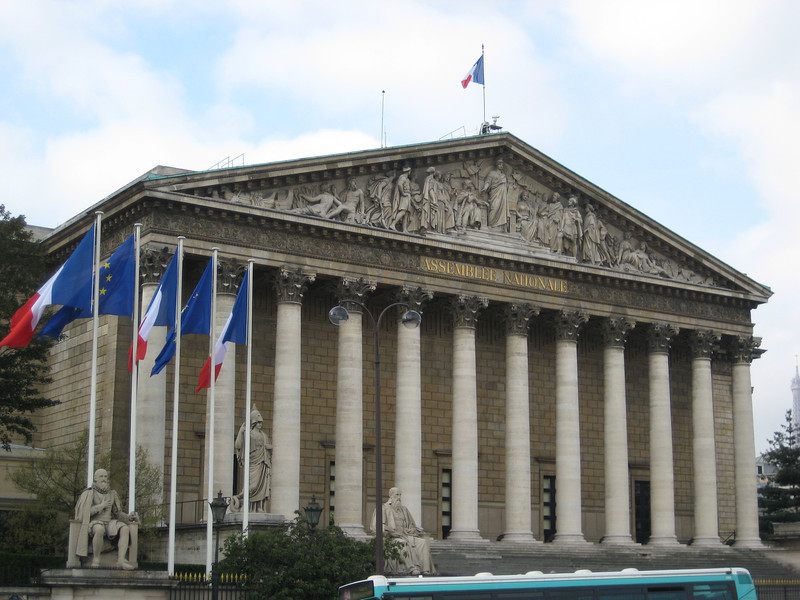
After another quick & uneventful trip back on the Eurostar (I did manage to read most of a very interesting book on Captain Bligh of the Bounty), I was back in London & on the Tube listening to the PA apologising for the delays going in to Aldgate – typical.
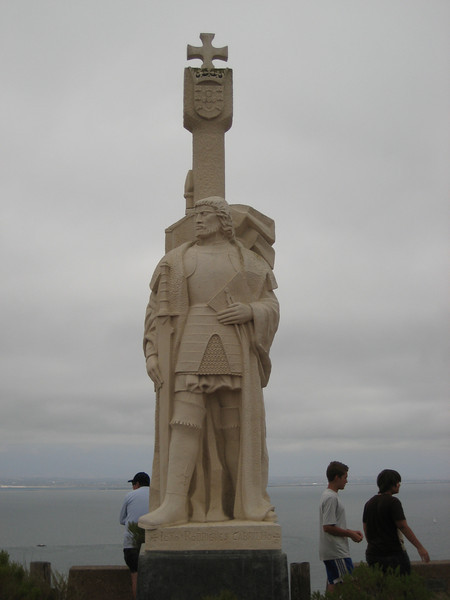
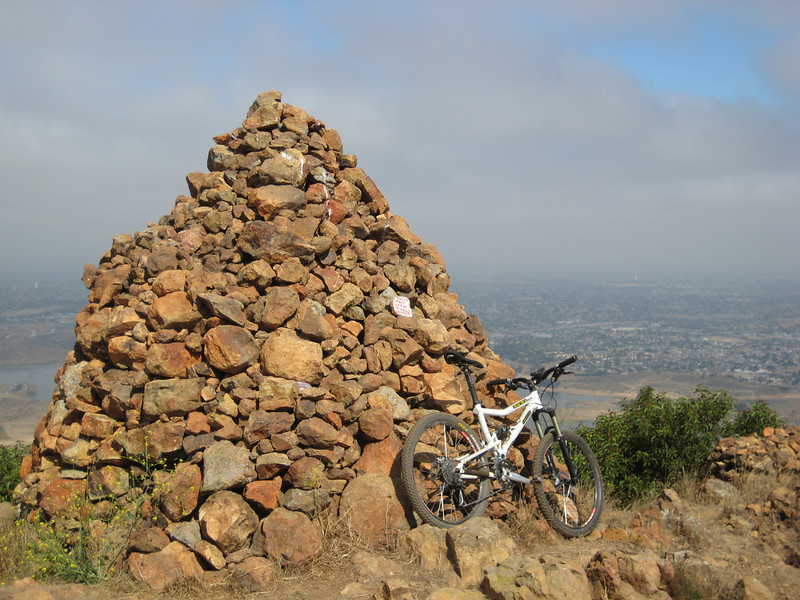
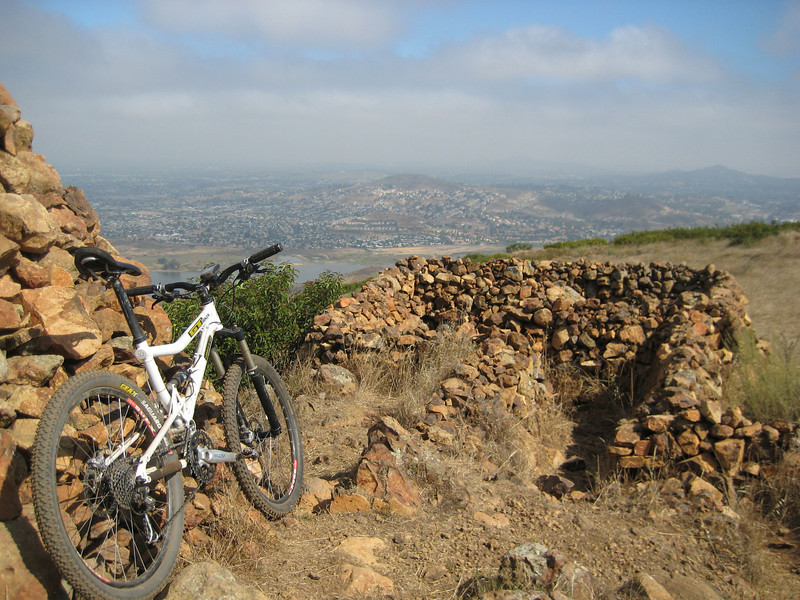
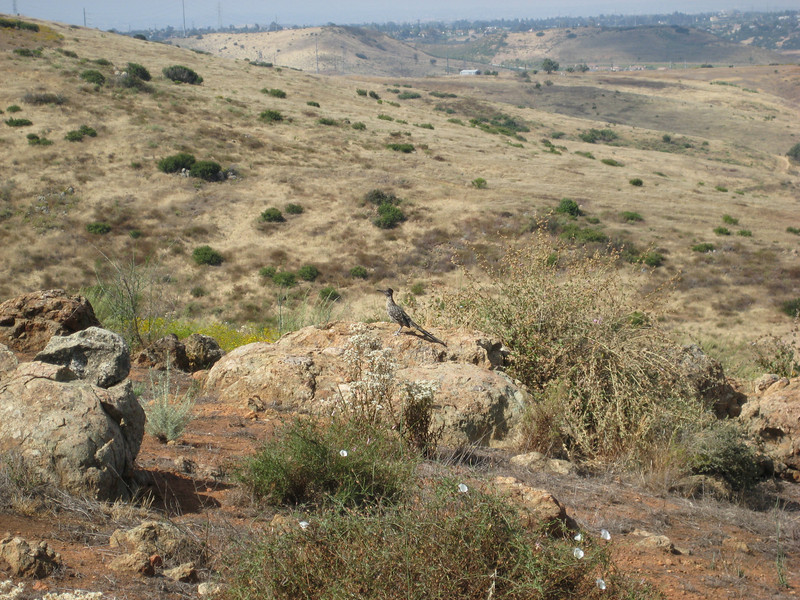
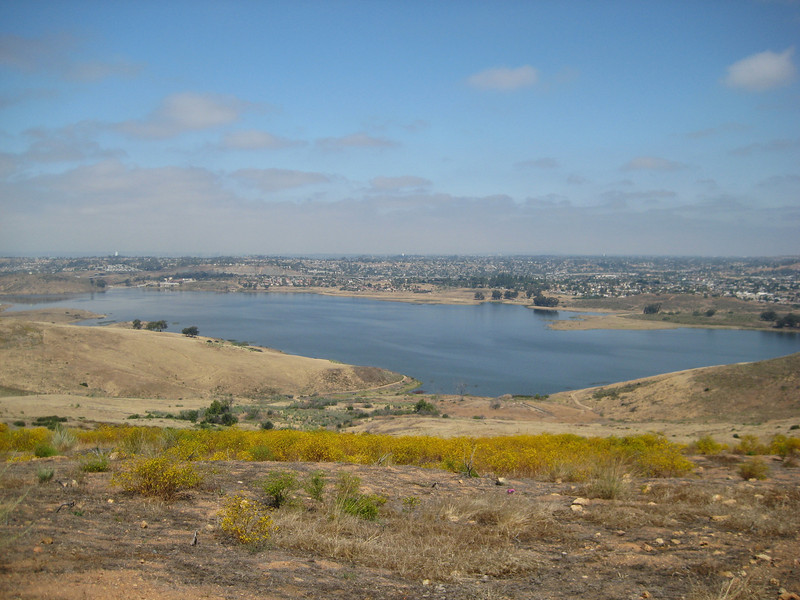
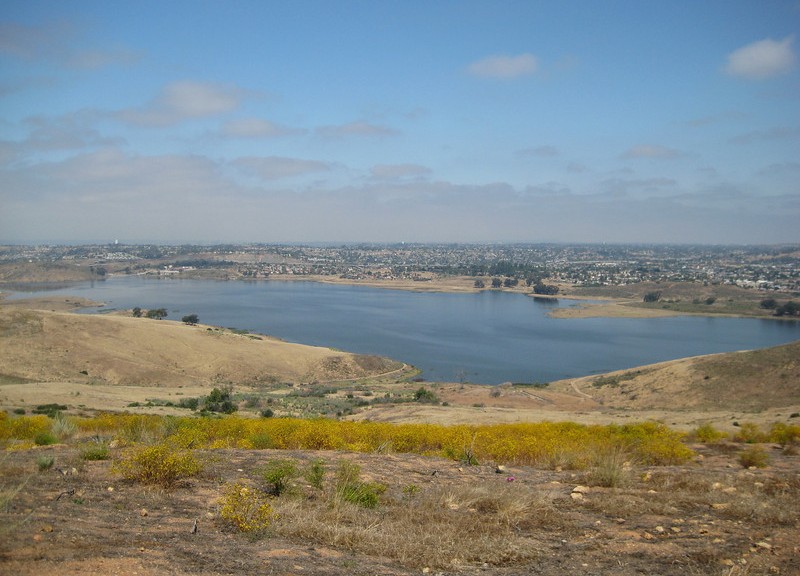
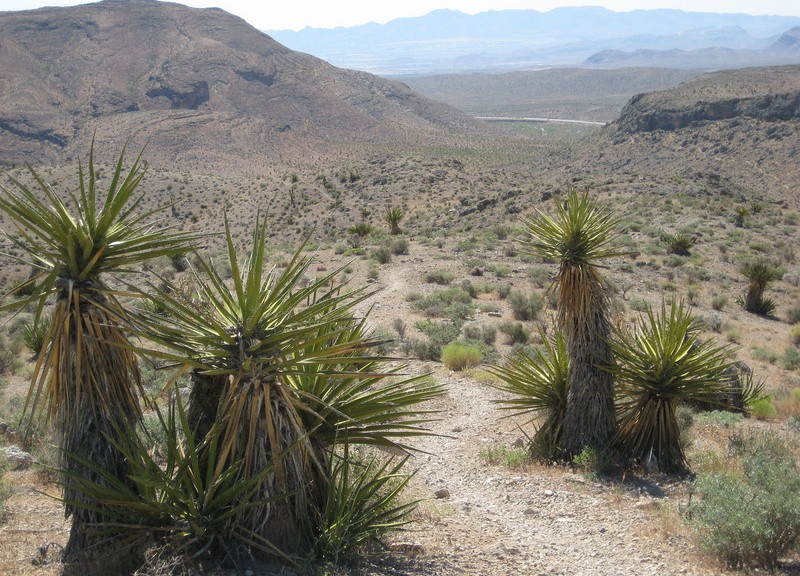
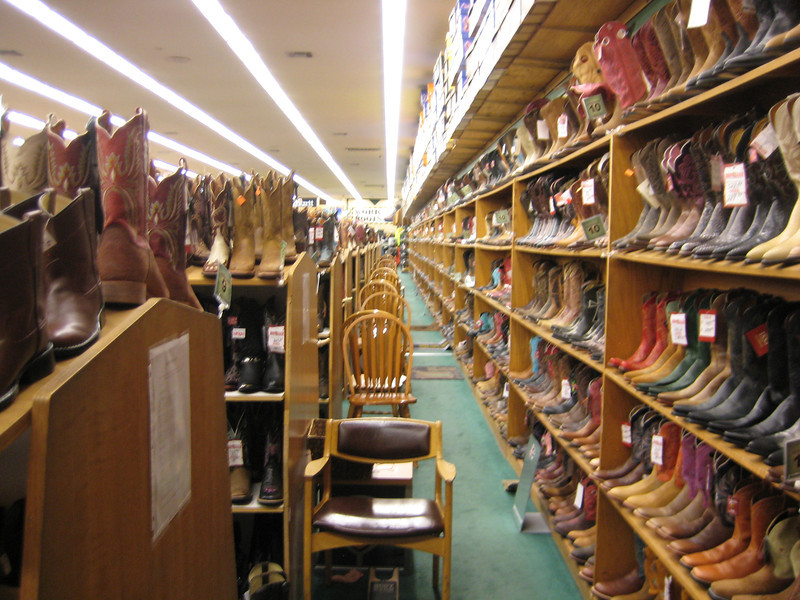 Boots, as far as the camera can see
Boots, as far as the camera can see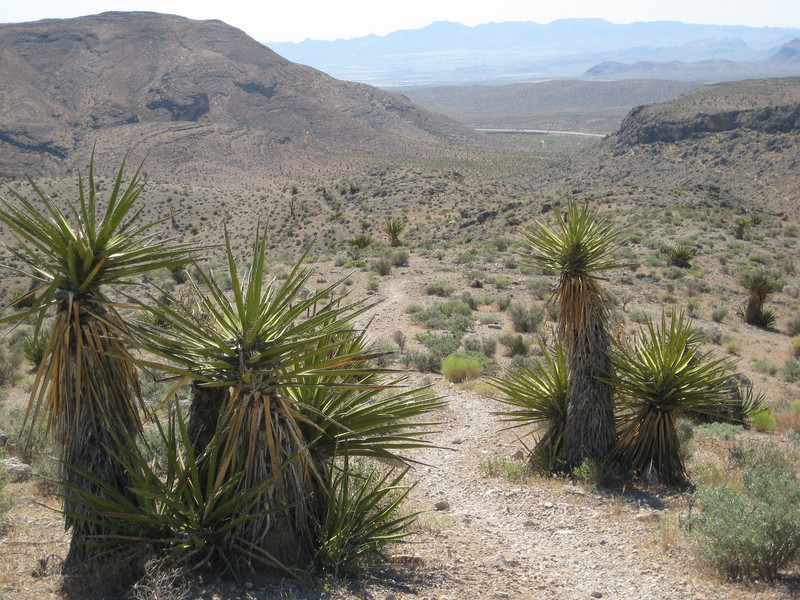 The yuccas were scratchy, but at least I didn’t fall in any cacti.
The yuccas were scratchy, but at least I didn’t fall in any cacti.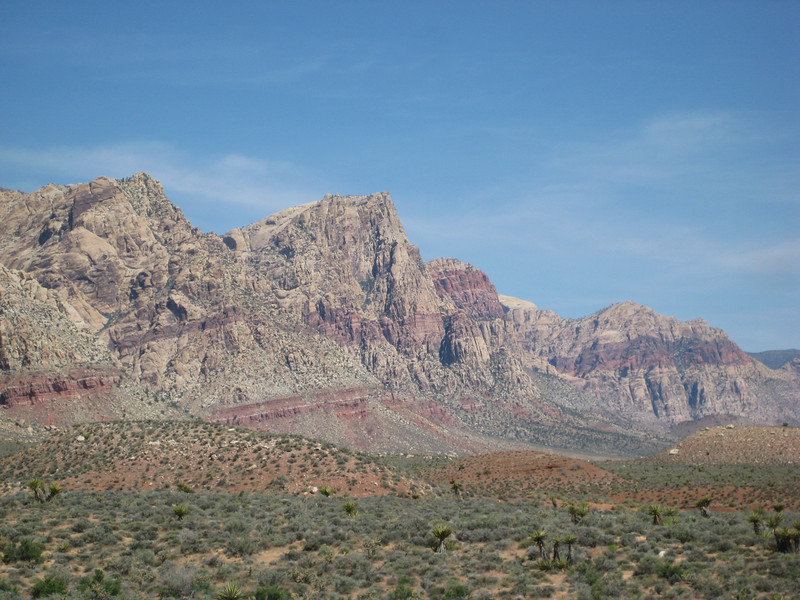 Gorgeous day for a ride in the desert.
Gorgeous day for a ride in the desert.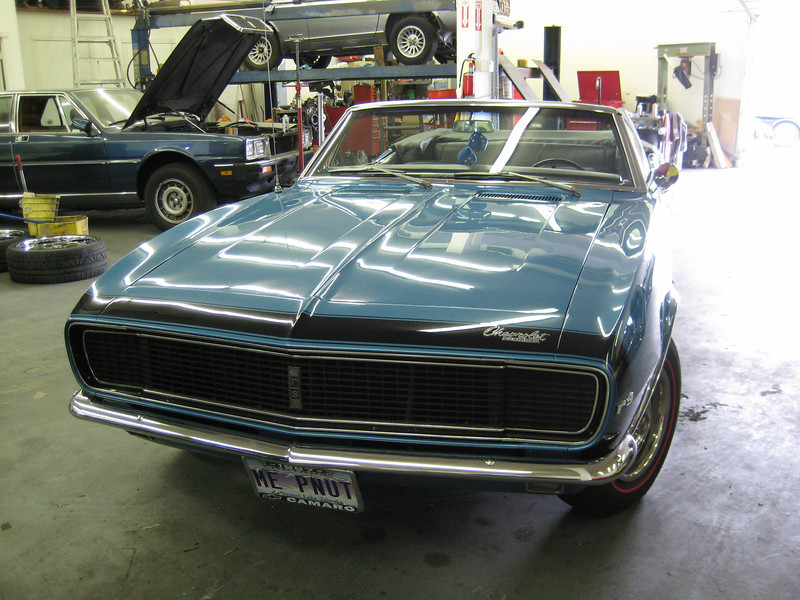 Some guy brought his Camaro in, after getting the Dino back from a full engine rebuild that day.
Some guy brought his Camaro in, after getting the Dino back from a full engine rebuild that day.